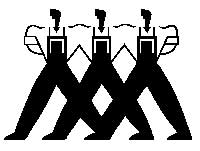Technical information - woodworm treatment products
Borax Boron based products in water - technical and safety information
What are Borates
Borates have been used as Wood Preservatives for over 50 years. Boron-containing wood preservatives are all derived from naturally occurring borate minerals. Boron does not occur in nature in its elemental form, but as oxygen-containing compounds such as boric acid, or Borates such as Borax. The mineral tincal (Borax) is the most significant source of commercially used borate. There are major deposits in both the USA and Turkey and other forms of borate are found in South America, China and Russia.
Boron is widely distributed in plant and animal tissues and is known to be essential for plant growth. The daily intake for humans varies from 0.5 to 3.1 mg from all natural food and water sources.
Environmental levels of boron (boron in mg/kg)
Soil - 10 to 20 mg
Plants - 5 to 100 mg
Fresh Water - 0.03 to 3 mg
Sea Water - 5 mg
Borates in Woodworm Treatment
Borates are a paradox in character as they are both essential micronuitrients for plants, and probably animals, but at the same time possess 'biostatic' activity which has allowed their continued use and development in wood preservation over the last 50 years. Approximately 5,000 tonnes of borate products are used in wood preservatives split roughly into three categories:-
i) decorative timber treatments and construction in the Asia Pacific area
ii) formulation of exterior and remedial wood preservatives in Europe
iii) in construction, wood composites and pest control in North America
Borates in other Industries
It should be remembered that borates are used in hundreds of products and processes throughout the world. The principle industries that utilise borate products are glass, detergents, agriculture, vitreous enamels and ceramic glazes and there is even a borate which helped you get here today - there is borate in your antifreeze and elsewhere in a motor vehicle!
Borate Chemistry
The inorganic borates ores are mined and refined into a wide variety of usable compounds. In the wood preservation industry the principle compounds are Polybor or Disodium octaborate tetrahydrate (Na2B8013.4H20) and some use of Boric acid (H3B03) and Boric oxide (B203).
Borates in the Atmosphere
Borates are non-volatile. As a dust borates rapidly settle from the atmosphere.
Borates in Water
Borates are naturally occurring minerals and are present in surface and underground waters. Borates in Nature are not considered hazardous to himan heath.
Eating Borates
Ingestion: Swallowing Borate prosucts in small quantities (one teaspoon) will cause no harm to healthy adults. If larger amounts are swallowed, give two glasses of water to drink and seek medical attention.
Storage of Borates
No special handling precautions are required, but dry indoor storage is recommended. No specific fire fighting measures are required since Borates are not flammable, combustible or explosive. The product is itself a flame retardant.
Source of Data in this section
European Directive 98/8/EC concerning the placing biocidal products on the market, produced by the Technical Committee of the Netherlands.
WOOD PRESERVATIVE AND BIOCIDE SAFETY
Use wood preservatives and biocides safely. Always read the label and product information Data Sheet before use.
Wear the correct safety equipment and keep unprotected people and animals out of the treated area for the statutory period given on the label.
All products have some hazards and the COSHH Regulations (Control of Substances Hazardous to Health) apply to ALL building repair and construction products that we sell, even Cement.
If in doubt consult us for free technical help. Take care not to contaminate soil, waterways or the environment with the product or the waste and packaging. These can be returned to us for disposal.
Avoid using any type of chemical in your home if any of the following are likely to come into contact with treated surfaces: babies, young children, asthmatics, pregnant women or those vulnerable due to ill health.
Boron History | Boron Treatment Range | Woodworm Shop
References | Privacy Policy | Returns Policy | Contact | Links | Testimonials

Property Repair Systems
T: 01626 872886
E: help@propertyrepairsystems.co.uk
Site written by: David Moore
David Moore, B.A. (Hons.), C.T.I.S., C.R.D.S. Technical Author
Google+